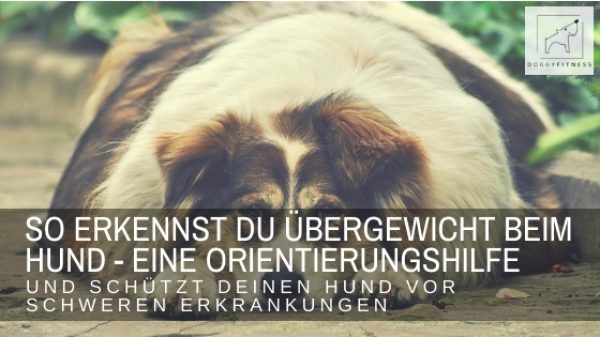You are unsure if your dog suffers from overweight?
Obesity is a touchy subject. Often it is difficult for us to assess whether our dog is affected. Do you feel the same way? I’ll tell you how your dog’s figure should be to stay fit and healthy!
What is the right body weight?
Body weight is not always a useful measure of nutritional status. Because for some breeds and especially for mixed breeds there are no reliable data for normal weight. To prevent obesity from occurring in the first place, it is important to keep an eye on the dog’s physical condition and take countermeasures in good time. Proper feed allocation can be read from body condition. But this is not always easy. Basically, they say that in a normal weight dog, the ribs should be easy to feel with little pressure applied. However, one must make restrictions here:
A greyhound is said to have what is called a “dry” body. This means that it looks rather lean by normal standards. While in a pug, due to the thick skin, the ribs should not be visible. There is no BMI for our four-legged friends like there is for us humans. However, there are some physical characteristics. They make it easier for you to see what nutritional state your dog is in.
This classification will help you to see if your dog is overweight
- Malnourished: Bony prominences such as ribs, spine and pelvic bones are visible and just under the skin. No discernible body fat, reduced musculature, clearly rising chest-abdominal line, very distinct waistline.
- very slim/slim: the ribs are easily palpable with the flat of the hand, slightly visible if necessary. Clearly visible waist and hip bump, distinctly rising chest-abdominal line, minimal subcutaneous fat.
- IDEAL: The ribs are easily palpable with little fat coverage, the waist is identifiable. Retraction of the posterior abdominal region visible from the side.
- overweight: ribs under fat layer can be felt only when pressure is applied, no clearly visible waistline. Fat accumulation in the loin area and at the base of the tail, beginning circumferential increase in the abdomen. No rise between chest and abdomen.
- Obese/severely obese: ribs not palpable, no discernible waistline, fat pads in hip area. Fat deposits on the neck and significant increase in circumference in the abdominal area up to a pot belly.
A dog should get so much energy through food at existing normal weight that he neither gains nor loses weight.
TIP: I recommend that you don’t rely on your eye measurement for your dog’s weight. Excess weight develops quickly. Losing weight takes all the longer. Weigh your dog at regular intervals, on the same scale if possible. If you check the weight regularly, you will save your dog from exhausting diets and serious illnesses.
Do you already know the FATAL CONSEQUENCES OF OVERWEIGHT?!
Dieser Beitrag ist auch verfügbar auf:
Français (French)
Deutsch (German)
Español (Spanish)
















